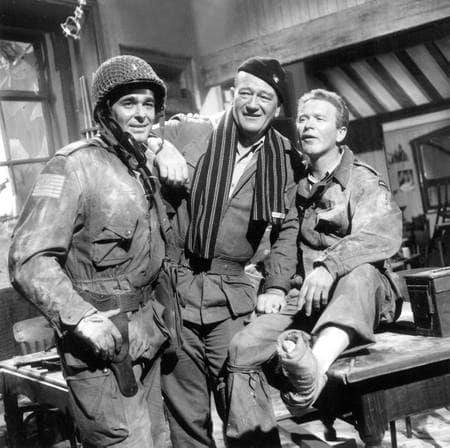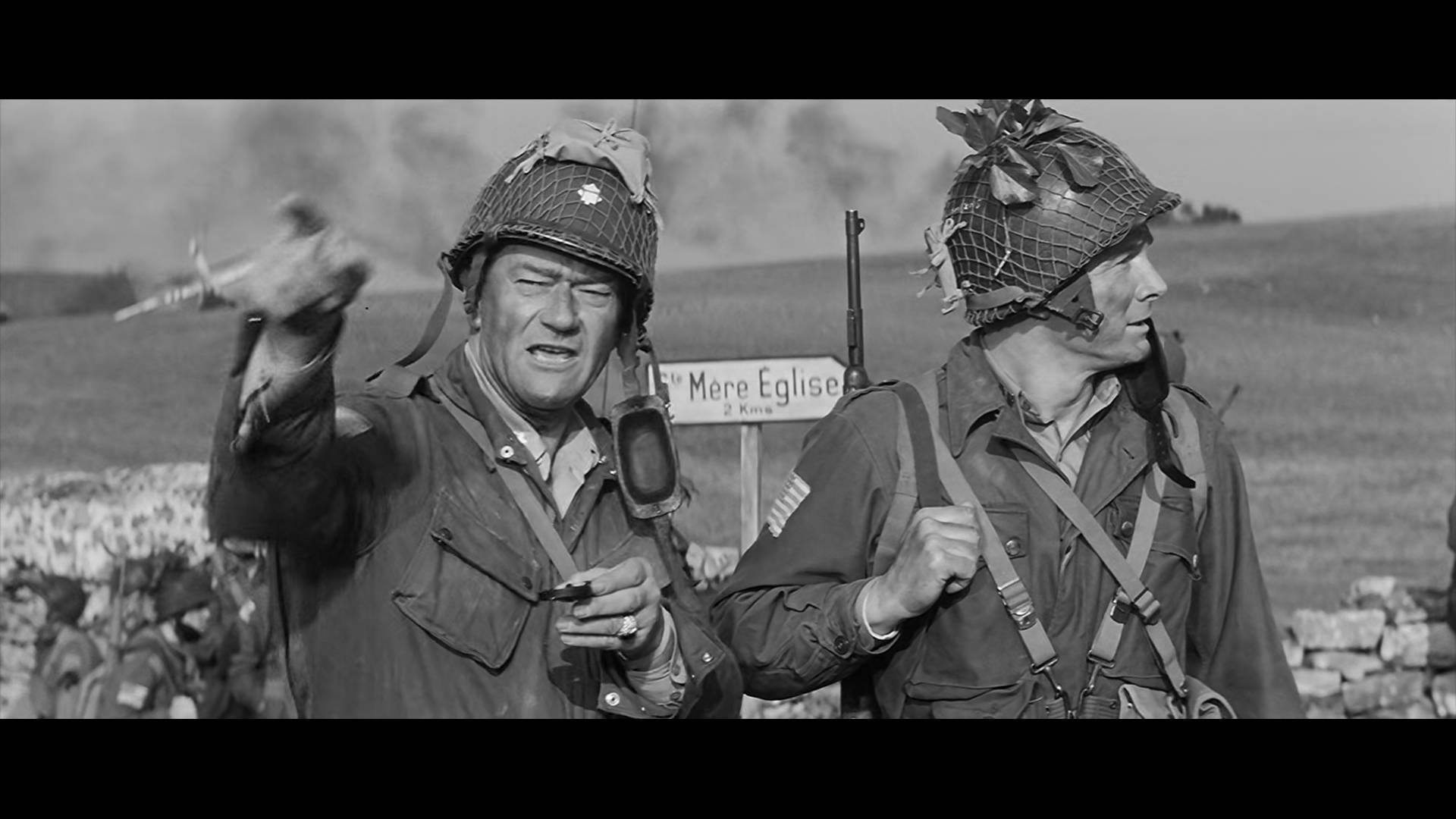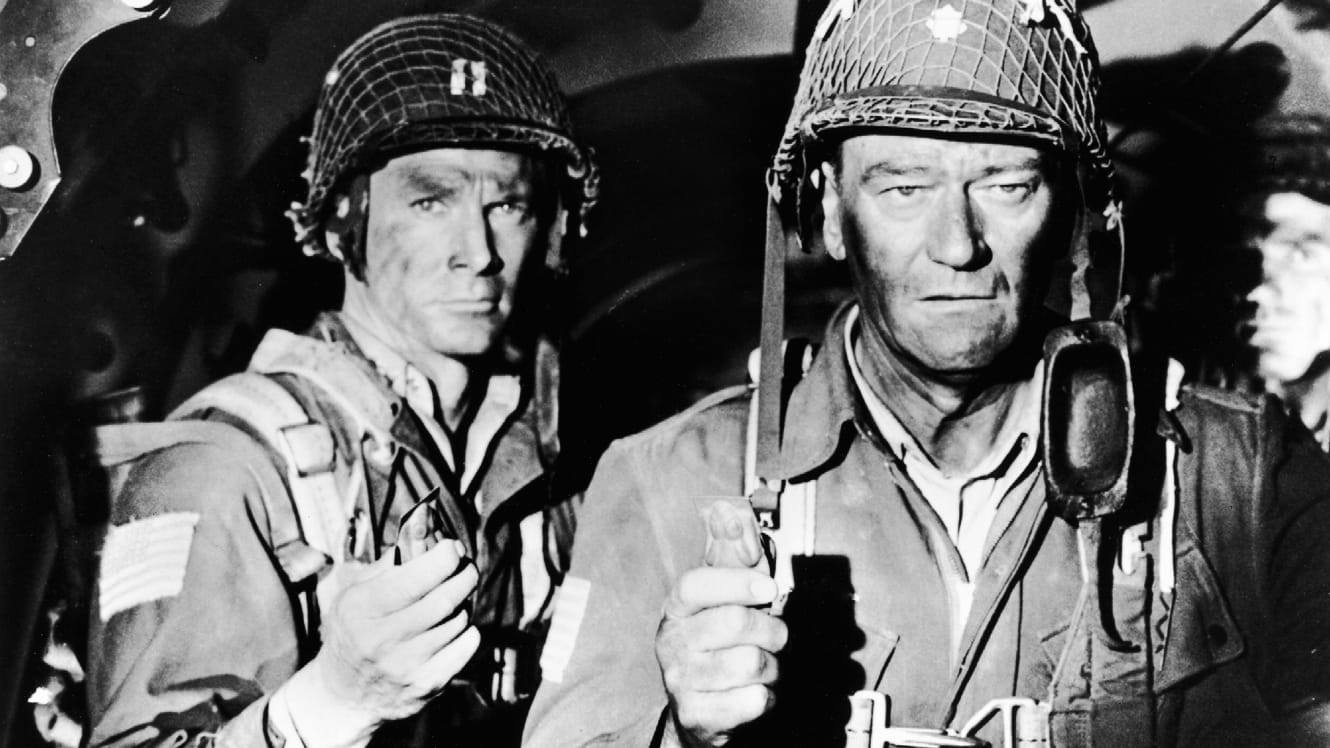Clip:
“The Longest Day,” directed by Ken Annakin, Andrew Marton, and Bernhard Wicki, and released in 1962, is a monumental war film that vividly recounts the events of D-Day, June 6, 1944, during World War II. This epic film is known for its grand scale, historical accuracy, and its ensemble cast, which includes many of the era’s most prominent actors. The film presents a comprehensive portrayal of the Allied invasion of Normandy, providing multiple perspectives from both the Allied and German sides of the conflict.
Plot Overview
The film’s narrative is structured to cover the D-Day invasion from several viewpoints, including those of American, British, and German forces. It begins with the early hours of the invasion, focusing on the meticulous planning and the challenges faced by the Allied forces as they execute Operation Overlord. The story weaves together various threads, from the airborne landings to the seaborne assaults, highlighting the complexity and scale of the operation.
The film is divided into multiple segments, each showcasing different aspects of the invasion. Key scenes include the dramatic parachute drops of the 82nd and 101st Airborne Divisions, the heroic landings at Omaha Beach, and the strategic maneuvers of the Allied commanders. On the German side, the film portrays the confusion and resistance of the German forces as they scramble to respond to the massive Allied assault. This multi-perspective approach provides a comprehensive view of the day’s events, emphasizing the scale and significance of the operation.
Themes and Historical Accuracy
“The Longest Day” explores themes of bravery, sacrifice, and the chaos of warfare. The film pays tribute to the soldiers who fought on both sides, depicting their courage and the brutal realities of combat. The focus on historical accuracy is evident in the film’s attention to detail, from the depiction of military tactics to the representation of real-life individuals involved in the invasion.
The film’s portrayal of the D-Day invasion is based on Cornelius Ryan’s book of the same name, which provided a thorough account of the events. The filmmakers worked closely with military advisors to ensure that the depiction of the battle was as authentic as possible. This dedication to accuracy contributes to the film’s lasting impact as a historical document as well as a piece of cinema.
Cinematic Style and Production
The cinematic style of “The Longest Day” reflects its epic scope and ambition. The film features large-scale battle sequences, including extensive use of practical effects and large numbers of extras to recreate the intensity of the invasion. The depiction of Omaha Beach, in particular, is notable for its realistic and harrowing portrayal of the landing, capturing the confusion and carnage of one of the day’s most brutal engagements.
The film’s use of multiple directors, each handling different segments, contributes to its varied visual style and storytelling approach. This collaboration results in a dynamic and engaging presentation, with each segment contributing to the overall narrative. The use of color and wide-angle shots enhances the film’s grand scale, making the viewer feel immersed in the battle.
Performances
The ensemble cast of “The Longest Day” features a range of prominent actors, including John Wayne, Robert Ryan, Richard Burton, and Sean Connery, among others. Each actor brings a distinct presence to their role, whether portraying Allied or German soldiers. The performances contribute to the film’s authenticity, capturing the diverse experiences of those involved in the invasion.
The film’s large cast and multiple storylines allow for a broad representation of different characters and viewpoints. This diversity in casting and performance helps to convey the complexity of the D-Day invasion and the various roles played by individuals on both sides of the conflict.
Conclusion
“The Longest Day” is a landmark film in the war genre, renowned for its ambitious scope, historical accuracy, and powerful performances. The film’s portrayal of the D-Day invasion offers a comprehensive and respectful depiction of one of World War II’s most significant events. With its epic battle sequences, multi-perspective storytelling, and commitment to authenticity, “The Longest Day” remains a classic and influential work that continues to be celebrated for its contribution to both cinema and historical representation.



Related Posts

Ben-Hur (2016)
Trailer: https://youtu.be/3BmeR9GYdDU?si=KKni82I1ZT6KScl9 "Ben-Hur" (2016), directed by Timur Bekmambetov, is a…

The Hunger Games (2012)
Video: https://youtu.be/PbA63a7H0bo?si=EBJjTKRn-c92II5C Based on Suzanne Collins' bestselling novel, "The Hunger…

